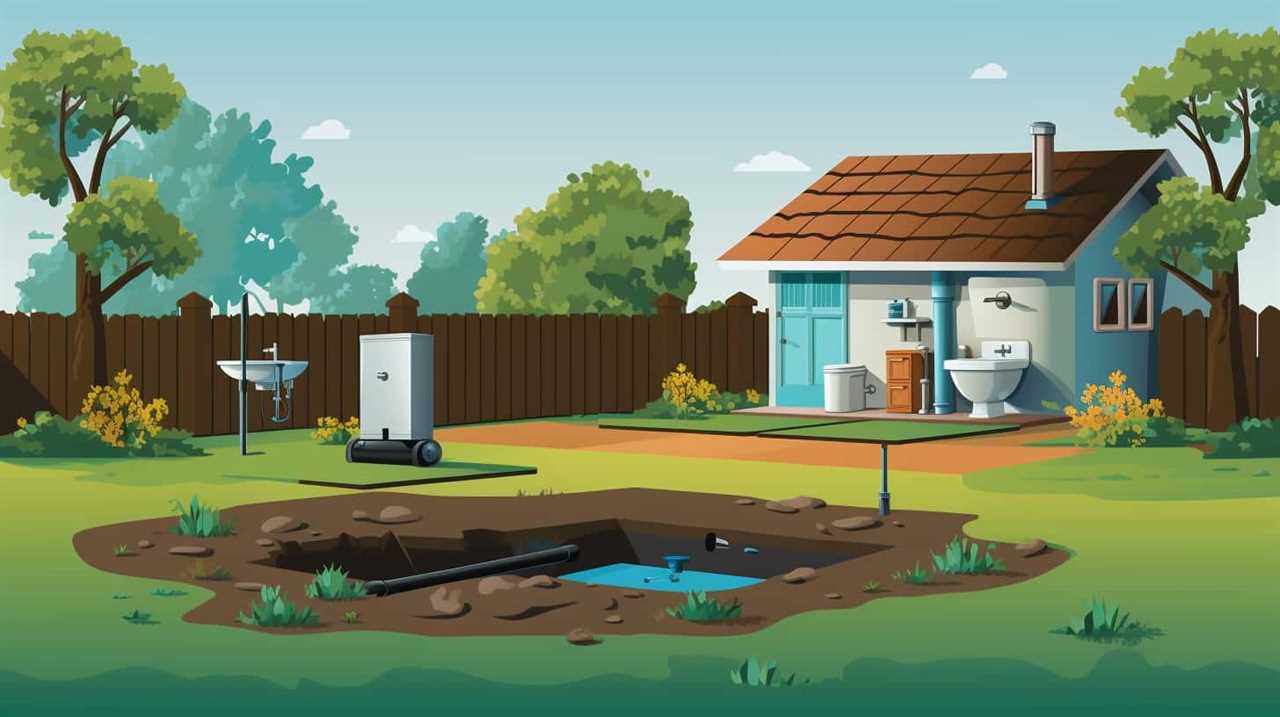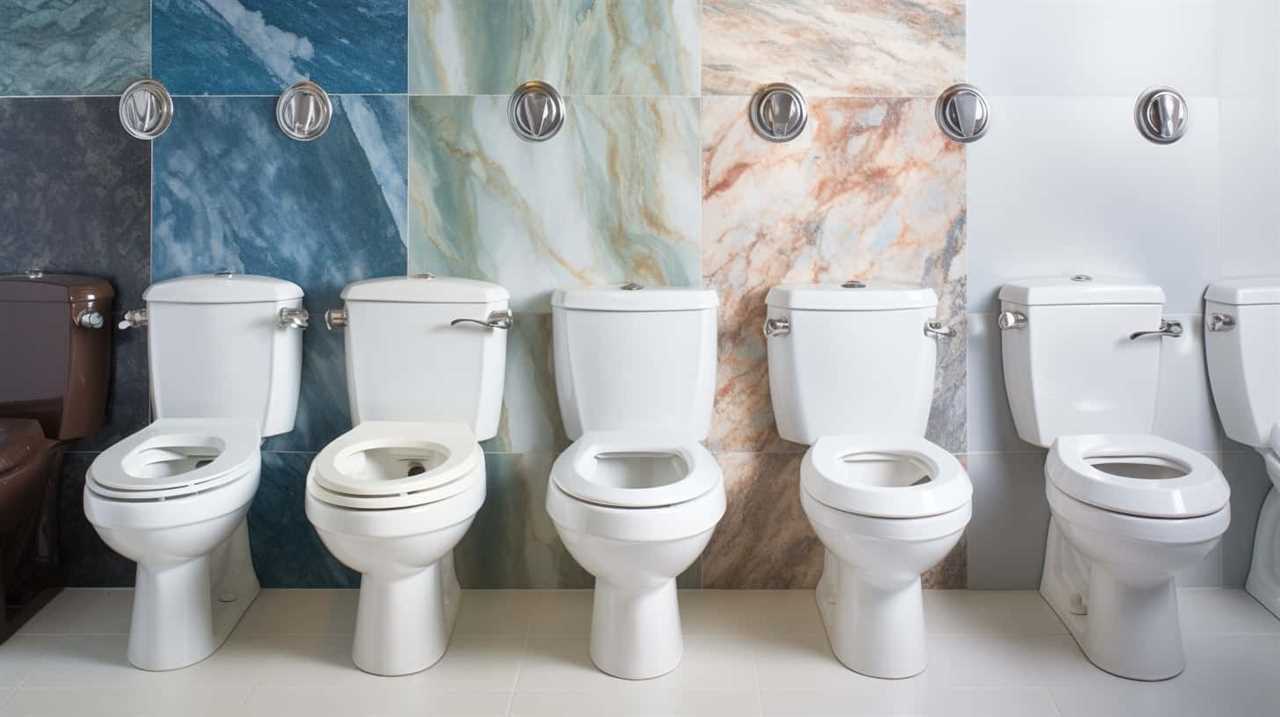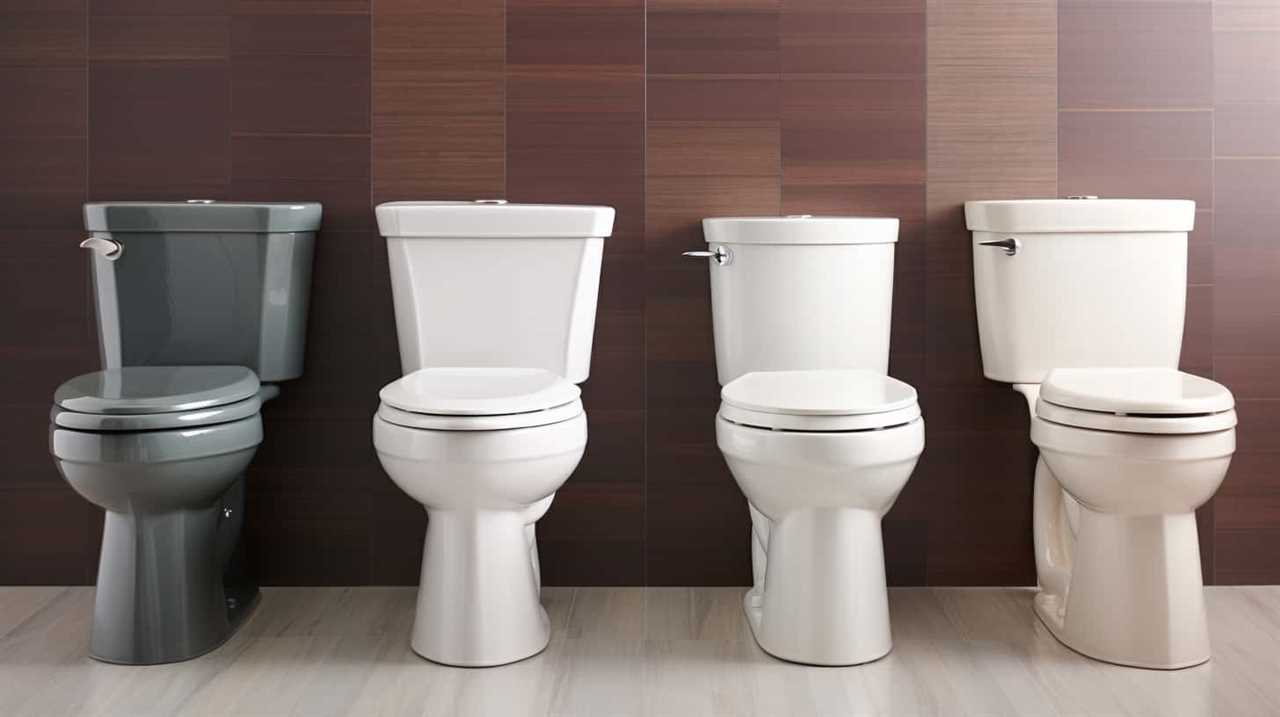We have all wondered about the water usage of our toilets. How do we know how many gallons per flush our toilet is consuming?
In this article, we will explore various methods to determine the exact water flow of your toilet.
By examining the toilet model and manufacturer, checking the water usage label, using the bucket and stopwatch method, measuring the water level in the tank, or consulting with a plumber or manufacturer’s website, you can gain mastery over your toilet’s water consumption.
Key Takeaways
- Identifying the specific toilet model and manufacturer is crucial in determining the gallons per flush of your toilet.
- Checking the water usage label on the back of the toilet tank or inside the toilet bowl provides information about the number of gallons per flush.
- Using the bucket and stopwatch method can help calculate the gallons per flush by measuring the amount of water collected during a flush.
- Consulting with a plumber or visiting the manufacturer’s website allows you to access expert advice and detailed specifications about water-efficient toilet models.
Toilet Model and Manufacturer
We can determine the number of gallons per flush our toilet uses by identifying the specific toilet model and manufacturer. This information is crucial for toilet maintenance and water conservation.

Different toilet models have varying flush capacities, and understanding the exact specifications of our toilet can help us make informed decisions about water usage. To find out this information, we can start by locating the model number on the toilet itself, typically found inside the tank or on the back of the bowl.
With the model number in hand, we can then refer to the manufacturer’s website or contact their customer service to obtain the necessary details. By knowing the gallons per flush, we can implement water-saving measures and ensure efficient toilet performance while reducing our environmental impact.
Checking the Water Usage Label
To determine the water usage of my toilet, I can check the water usage label, which provides important information about the number of gallons per flush. This label is typically located on the back of the toilet tank or inside the toilet bowl. By checking this label, I can easily find out how much water my toilet uses with each flush.
It’s important to note that older toilets generally use more water compared to newer models, so checking the toilet’s age is essential in understanding its water usage. Additionally, researching water conservation laws in my area can provide valuable information regarding the maximum allowed water usage for toilets.

Using a Bucket and Stopwatch Method
One way to determine the water usage of our toilet is by using the bucket and stopwatch method. This simple DIY technique allows us to measure the exact amount of water used during each flush. Here are some steps to follow:
- Fill a bucket with water.
- Place the bucket carefully under the toilet tank.
- Flush the toilet and start the stopwatch simultaneously.
- As the toilet tank refills, stop the stopwatch once it reaches its normal level.
By measuring the amount of water collected in the bucket and recording the time it took to refill the tank, we can calculate the gallons per flush.
This method not only helps us understand our toilet’s water usage but also allows us to identify any potential leaks or inefficiencies. It’s a valuable tool for water conservation and DIY toilet maintenance.
Measuring the Water Level in the Tank
To accurately determine the water level in the toilet tank, it’s essential to visually inspect the water line marking inside the tank. This method provides the most accurate measurement and ensures the proper functioning of the toilet.

Measuring the water level with precision is crucial for maintaining the desired flushing efficiency and reducing water waste. By keeping the water level at the recommended mark, you can ensure that your toilet is using the appropriate amount of water per flush. This not only helps in conserving water resources but also has a significant impact on your water bills.
A higher water level may result in unnecessary water consumption, leading to increased costs. Therefore, regularly checking and adjusting the water level in the toilet tank is essential for both measuring accuracy and financial savings.
Consulting With a Plumber or Manufacturer’s Website
To find accurate information about the number of gallons per flush for your toilet, we recommend consulting with a plumber or visiting the manufacturer’s website. Here are some key reasons why these sources can provide valuable insights:
- Comparing different toilet models for water efficiency: Plumbers have hands-on experience with various toilet models and can offer expert advice on which ones are the most water-efficient. Manufacturer websites often provide detailed specifications and water usage information for their products, allowing you to compare different models side by side.
- Retrofitting old toilets to reduce water usage: Plumbers can assess your current toilet’s water usage and recommend retrofitting options, such as installing a dual-flush mechanism or replacing the flush valve. Manufacturer websites may also offer retrofitting kits or instructions to help you reduce water consumption without replacing the entire toilet.
- Access to technical expertise: Both plumbers and manufacturer websites possess technical knowledge about toilet design, water flow rates, and water-saving technologies. They can help you understand the specific features and mechanisms that contribute to water efficiency, empowering you to make informed choices.
- Precision and accuracy: By consulting with a plumber or visiting the manufacturer’s website, you can obtain accurate and up-to-date information about the number of gallons per flush for your toilet. This ensures that you have the most reliable data to guide your decision-making process and promote water conservation.
Frequently Asked Questions
Can I Reduce the Amount of Water Used per Flush in My Toilet?
Yes, we can reduce the amount of water used per flush in our toilet. There are eco-friendly flush options available that allow for water conservation while still effectively flushing waste.

How Can I Determine the Age of My Toilet?
To determine the age of our toilet and identify signs of it being old, we can inspect the manufacturing date stamped on the inside of the tank or look for outdated features and design.
Are There Any Government Regulations Regarding Toilet Water Usage?
Government regulations play a crucial role in water conservation, including toilet water usage. It is important to be aware of these regulations to ensure that our toilets are operating efficiently and minimizing water wastage.
Can I Convert My Toilet to a Dual-Flush System?
Yes, we can convert our toilet to a dual-flush system to improve water efficiency. Did you know that dual-flush toilets can reduce water usage by up to 68% compared to traditional toilets?
Are There Any Incentives or Rebates Available for Upgrading to a Water-Efficient Toilet?
There may be incentives or rebates available for upgrading to a water-efficient toilet. It is worth researching local programs or contacting your utility provider to see if they offer any financial incentives for making the switch.

Conclusion
In conclusion, determining the number of gallons per flush for your toilet can be easily accomplished by checking the toilet model and manufacturer, reading the water usage label, using the bucket and stopwatch method, or measuring the water level in the tank.
If you’re still unsure, consulting with a plumber or visiting the manufacturer’s website can provide you with the precise information you need.
Just like a skilled navigator steering a ship, these methods will guide you towards water-saving success.










